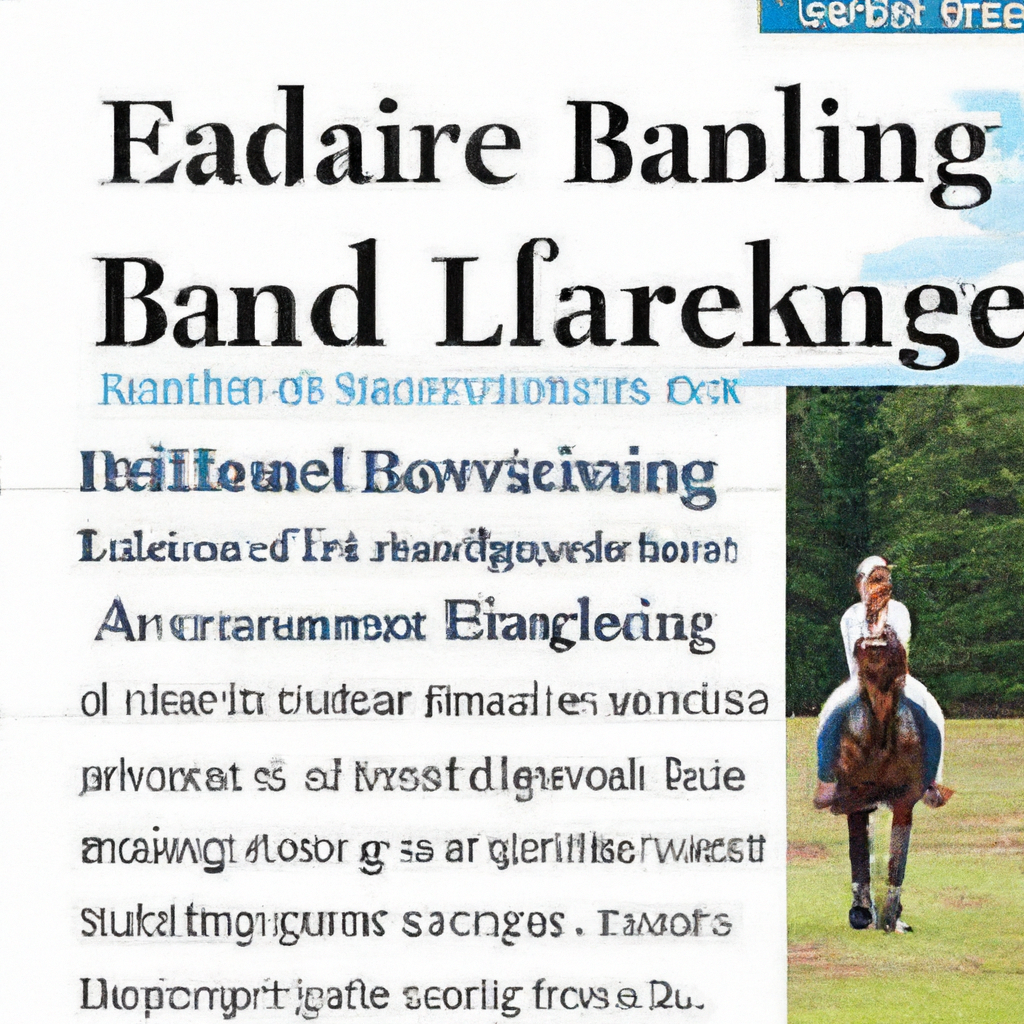Are you struggling to find balance between your passion for horseback riding and the demands of everyday life? Look no further, because we’ve got you covered. In this article, we will explore the art of juggling horseback riding and the responsibilities of daily life. Whether you’re a dedicated equestrian or someone who is just starting out on their horseback riding journey, we’ll provide you with practical tips and advice on how to strike that perfect balance. From managing your time effectively to finding supportive communities, we’ll delve into all aspects of maintaining your love for horseback riding while keeping up with the demands of the real world. So, if you’ve ever felt overwhelmed by the constant juggling act, read on and discover how you can achieve harmony between your passion and your everyday life.

The Benefits of Juggling Horseback Riding and Everyday Life
Finding balance between horseback riding and everyday life can be a challenge, but the rewards are well worth it. Not only does horseback riding provide physical fitness and health benefits, but it also contributes to mental well-being and stress relief. Additionally, the sense of achievement and confidence building that comes from mastering this skill is unparalleled.
Physical Fitness and Health
Engaging in horseback riding regularly offers numerous physical fitness benefits. From improving cardiovascular health to strengthening core muscles, the equestrian sport provides a whole-body workout. Riding requires stability and balance, which engage the muscles in the legs, hips, and core. It also promotes good posture and strengthens the back muscles.
Furthermore, horseback riding requires coordination and control, which helps enhance motor skills and reflexes. Regular riding can improve flexibility, agility, and even help with weight management. It is a fantastic way to stay active and keep fit while enjoying the great outdoors.
Mental Well-being and Stress Relief
Apart from its physical benefits, horseback riding is known for the positive impact it has on mental well-being. Spending time with horses and being in nature has a calming effect on the mind. The rhythmic motion of riding can be therapeutic and help reduce stress and anxiety.
Additionally, the bond formed between rider and horse creates a sense of trust and companionship. The focus and concentration required while riding can act as a form of meditation, allowing riders to escape from the pressures of daily life. The connection with these majestic animals can bring a sense of peace and serenity, promoting overall mental well-being.
Sense of Achievement and Confidence Building
Mastering the art of horseback riding requires dedication, persistence, and practice. As riders develop their skills and progress, they experience a sense of achievement that boosts their self-confidence. The stages of learning and achieving milestones create a sense of fulfillment and pride.
Overcoming challenges and conquering fears while riding instills a sense of courage and resilience. The bond formed with the horse contributes to a newfound confidence in one’s abilities. Whether it’s perfecting a jump or executing a dressage maneuver, each achievement builds confidence and provides a sense of accomplishment.
Challenges and Obstacles to Balance
While the benefits of horseback riding are plentiful, there are challenges and obstacles that come with juggling this passion with everyday life. Here are some common hurdles that riders may face:
Time Management
Finding time to ride can be a significant challenge, especially for riders with demanding work or family commitments. Balancing responsibilities while still ensuring enough time for horseback riding can be tricky. It requires effective time management skills and prioritizing one’s schedule.
Financial Constraints
Horseback riding can be an expensive hobby, including costs associated with lessons, boarding, equipment, and veterinary care. Financial constraints may limit the frequency or intensity of riding. It’s important to assess and plan for the financial aspects of horseback riding to maintain a healthy balance within one’s budget.
Social and Family Commitments
Family and social obligations can sometimes conflict with the time and energy needed for horseback riding. Balancing commitments to friends, family, and community with the pursuit of riding can create challenges. Open communication and understanding from loved ones are essential in finding a harmonious balance.
Strategies for Finding Balance
While there may be challenges to juggling horseback riding and everyday life, there are strategies that can help find a healthy balance.
Setting Priorities and Goals
Clarifying your priorities is key to finding balance. Determine what aspects of horseback riding are most important to you and how they fit into your overall life goals. By identifying your priorities, you can allocate time and resources accordingly.
Creating a Schedule
Establishing a schedule that includes dedicated time for horseback riding can help maintain balance. Block out specific times in your calendar for riding, and treat them as non-negotiable appointments. By having a consistent schedule, you can ensure regular riding sessions without neglecting other commitments.
Multitasking and Efficiency
To optimize your time, find ways to multitask or be more efficient in your daily routine. For example, use your commute to listen to educational podcasts or audiobooks about horseback riding. Seek opportunities to incorporate riding-related activities into your day, such as reading books or articles during lunch breaks or scrolling through equestrian social media accounts while waiting in line.
Incorporating Horseback Riding into Daily Routine
To maximize the benefits of horseback riding and juggle it with everyday life, finding ways to incorporate riding into your daily routine can be helpful. Here are some ideas:
Morning Routines
Wake up a little earlier to allocate time for horse care and preparation before starting your day. It could involve feeding and grooming the horse, as well as warming up and stretching yourself. Starting the day with horse-related activities can set a positive tone for the rest of your day.
Evening Routines
Make horseback riding a part of your evening routine by dedicating time either after work or before bed. Plan your riding sessions accordingly, considering factors such as weather and daylight. It serves as a refreshing and fulfilling way to wind down from the day’s activities.
Weekend Excursions
Take advantage of weekends to plan more extensive horseback riding activities. This could involve trail riding, participating in competitions or clinics, or simply spending quality time with your horse. Scheduling these excursions in advance allows you to look forward to them and make the necessary arrangements.

Creating a Supportive and Understanding Environment
Having a supportive and understanding environment is crucial for maintaining balance between horseback riding and everyday life.
Communicating with Family and Friends
Openly communicate with your loved ones about the importance of horseback riding to you. Share your long-term goals, the physical and mental benefits you derive from it, and how it contributes to your overall well-being. By creating an understanding environment, you can garner support and cooperation from those around you.
Seeking Professional Help
From time management to financial planning, seeking professional help can provide valuable guidance. Consult with experts in the field to help you establish strategies and systems that align with your priorities and goals. Professional guidance can assist you in managing your time, finances, and other logistical aspects of balancing horseback riding and everyday life.
Joining Supportive Communities
Engaging with like-minded individuals who share your passion for horseback riding can provide a supportive community. Join local equestrian clubs or online forums to connect with fellow riders. Sharing experiences, advice, and challenges can help you feel understood and motivated to maintain balance.
Maintaining Motivation and Passion
To sustain your enthusiasm and commitment to horseback riding, it’s essential to maintain motivation and passion. Here are some strategies:
Setting Realistic Expectations
Acknowledge that progress in horseback riding is a journey, and it takes time and practice to reach certain levels of mastery. Set realistic expectations for yourself and celebrate small wins along the way. By avoiding unnecessary pressure, you can foster a sustainable and enjoyable experience.
Rewarding Yourself
Create a system of rewards that motivates and acknowledges your dedication. Treat yourself to small rewards for accomplishing specific riding goals or milestones. This could be anything from a relaxing spa day to purchasing new riding gear. Celebrating your achievements helps maintain motivation and makes the journey more enjoyable.
Focusing on the Joy of Riding
Remember the initial spark and joy that ignited your passion for horseback riding. Focus on the pleasure and excitement of being in the saddle. Embrace the connection with your horse and the freedom that comes with riding. By reminding yourself of the joy riding brings, you can stay motivated and enthusiastic.

Overcoming Fear and Anxiety
Fear and anxiety can be significant obstacles when trying to find balance in horseback riding and everyday life. Here are some techniques to overcome them:
Building Trust with Your Horse
Developing trust with your horse is essential in overcoming fear and anxiety. Spend quality time with your horse, engage in ground work, and establish a strong bond. Building trust can help alleviate fears and create a sense of security when riding.
Utilizing Visualization and Breathing Techniques
Visualization and deep breathing exercises are valuable tools to manage fear and anxiety. Visualize yourself successfully navigating challenging riding scenarios or conquering your fears. Deep breathing exercises help calm the nervous system, reduce stress, and promote relaxation.
Gradual Exposure and Confidence Building Exercises
Gradually expose yourself to situations that trigger fear or anxiety. Start with smaller challenges and progressively work your way up. Engage in confidence-building exercises, such as ground poles or practicing specific skills with the guidance of a knowledgeable instructor. Incremental progress boosts confidence and helps conquer the fear.
Embracing Flexibility and Adaptability
Flexibility and adaptability are key when striving to find the right balance between horseback riding and everyday life.
Accepting Imperfections
Understand that not every riding session will be perfect, and that’s okay. Embrace the learning process and appreciate the nuances of the sport. Allow room for mistakes, as they are valuable opportunities for growth and improvement.
Being Open to Change
Life circumstances and priorities can change over time. Be open to adjusting your riding goals and routine accordingly. Flexibility allows for continued enjoyment of horseback riding while adapting to the demands of daily life.
Adjusting Riding Goals According to Life Circumstances
Recognize that personal, professional, or family circumstances may require adjustments to your riding goals. There may be seasons where intensive training or competition participation is not feasible. By adapting your goals to fit your current circumstances, you can ensure a harmonious balance without feeling overwhelmed.

Managing Finances for Horseback Riding
Effectively managing finances is crucial when incorporating horseback riding into your life.
Budgeting and Planning
Develop a budget that accounts for the necessary expenses related to horseback riding. Set aside funds for lessons, boarding, equipment maintenance, veterinary care, and any other relevant costs. Plan your expenses ahead of time to ensure financial stability and prevent any unexpected financial strain.
Exploring Affordable Options
Seek out more affordable alternatives without compromising on the quality of your riding experience. Look for local riding clubs or lesson packages that offer discounted rates. Consider volunteer opportunities at local stables or equine-related events, as they may provide opportunities for riding in exchange for assistance.
Seeking Sponsorship or Financial Aid
Explore sponsorship opportunities or financial aid programs available in your area. Depending on your riding skills and goals, you may be eligible for financial support from local businesses, horse organizations, or educational institutions. Research available options and apply for relevant sponsorships or grants.
The Art of Self-Care
Engaging in self-care practices is crucial for both your well-being and your ability to find balance between horseback riding and everyday life.
Prioritizing Rest and Recovery
Ensure you allocate time for rest and recovery to avoid burnout. Adequate sleep, hydration, and nutrition are essential for maintaining energy levels and overall well-being. Listen to your body and give yourself permission to rest when needed.
Seeking Professional Help for Injuries or Stress
If you experience physical injuries or excessive stress due to horseback riding, seek professional help. Consult with healthcare providers, such as physical therapists or sports medicine specialists, to address any riding-related injuries. Similarly, consider seeking guidance from therapists or counselors to manage stress and emotional well-being.
Engaging in Activities Outside of Riding
Maintain a healthy balance by engaging in activities outside of horseback riding. Pursue other hobbies, spend time with loved ones, and participate in recreational activities that bring you joy and fulfillment. A well-rounded life enhances your riding experience and prevents burnout.
By implementing these strategies, riders can effectively balance their love for horseback riding with their everyday life commitments. With perseverance, creativity, and a supportive environment, it is possible to lead a fulfilling equestrian lifestyle while juggling other responsibilities. Remember, the art of finding balance is an ongoing practice that evolves as circumstances change. Enjoy the journey and embrace the rewards that come with incorporating horseback riding into your everyday life.

